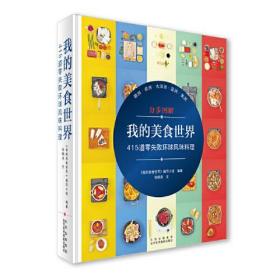
建筑材料的水分热量分析(英文版)
下单以备注书名为准:《建筑材料的水分热量分析》,正版全新可开发票
¥ 199.6 6.7折 ¥ 298 全新
库存4件
湖北武汉
认证卖家担保交易快速发货售后保障
作者黄祖坚
出版社科学出版社
出版时间2022-05
版次31
装帧其他
上书时间2024-10-06
- 在售商品 暂无
- 平均发货时间 14小时
- 好评率 暂无
- 最新上架
商品详情
- 品相描述:全新
图书标准信息
- 作者 黄祖坚
- 出版社 科学出版社
- 出版时间 2022-05
- 版次 31
- ISBN 9787030716606
- 定价 298.00元
- 装帧 其他
- 开本 其他
- 页数 176页
- 字数 300千字
- 【内容简介】
- 我国拥有全球丰富的竹资源和**世界的竹材加工技术,研究如何科学地将竹材推广应用于建筑工业具有重大意义。作为吸湿性植物纤维有机建筑材料,热湿学问题是制约其推广应用的瓶颈之一。本书开发“建筑用竹”热湿学模型,开展竹材、竹材构造和建筑系统研究。《BR》 竹材热湿性质研究。首次系统地对原竹和竹材工业化利用典型产品进行三维物理性质测试,获得完整的热湿性质参数;量化竹材生产工艺、基本物理性质、热湿物理性质之间的相关性规律,为热湿性质为导向的竹材工业生产和应用提供参考。《BR》 竹材构造与建筑系统热湿性能研究。构建竹材构造与建筑系统性能研究模型,以全年HVAC需求、室内热湿环境、构造热湿场、构造霉菌生长指数为性能指标,系统地对竹材建筑系统与构造设计参数进行因子影响分析;为热湿性能导向的竹材建筑系统与构造参数优化提供建议,为气候适应性设计、室内热湿环境控制和用户行为措施提供指导。《BR》 建筑“以竹代木”可行性的热湿学论证。开展竹木材料、建筑构件和围护空间的平行对比,阐明不同外部气候和构造类型工况下的竹、木性能单元优劣关系;论证“以竹代木”在热湿性能方面的可行性,提出竹材优势产品及其与木材市场竞争的建议。
- 【目录】
-
Part Ⅰ Materials
Chapter 1 Bamboo as a Building Material
1.1 Bamboo and bamboo construction
1.2 Hygrothermal issues
1.3 Hygrothermic research status on bamboo and bamboo construction
1.4 Building hygrothermal model
Chapter 2 Hygrothermal Properties of Bamboo
2.1 Hygrothermal properties test on bamboo
2.2 Basic properties test results
2.3 Hygric properties test results
2.4 Thermal properties test results
2.5 Data sheet
2.6 Discussion on the index“liquid water open porosity”
Chapter 3 Hygrothermal Damage and Protection on Bamboo
3.1 Types of bamboo damages and protection challenges
3.2 Hygrothermal protection
3.3 Study on mould growth of bamboo
3.4 Discussion on hygrothermal protection of bamboo and bamboo construction
Part Ⅱ Construction
Chapter 4 Climate Adaptive Bamboo Construction
4.1 Introduction
4.2 Methods
4.3 Bamboo construction design optimization:construction arrangement
4.4 Bamboo construction design optimization:material selection
4.5 Summary
Chapter 5 Impact of Driving Rain
5.1 Introduction
5.2 Method
5.3 Impact of driving rain on the annual hygrothermal performance
5.4 Impact of driving rain on the thermal performance in July
5.5 Discussion
5.6 Summary
Chapter 6 Comparison with Reference Timber Construction
6.1 Introduction
6.2 Comparison with reference timber units: material property
6.3 Comparison with reference timber units: construction performance
6.4 Discussion
6.5 Summary
Part Ⅲ Climate Data
Chapter 7 Hygrothermal Reference Year for Guangzhou
7.1 Introduction
7.2 Method
7.3 Generation of HRY
7.4 Assessment on the representativeness of HRY
7.5 Summary
Chapter 8 Test Reference Year for South China
8.1 Introduction
8.2 Method
8.3 Generation of TRY
8.4 Assessment on the representativeness of TRY
8.5 Impact analysis of meteorological elements on building energy consumption
8.6 Summary
Acknowledgements
References
Terminologies and Abbreviations
Annex
Annex Tables
Annex Figures
Postscript
内容摘要
作为吸湿性植物纤维有机建筑材料,热湿学问题是制约其推广应用的瓶颈之一。本书开发“建筑用竹”热湿学模型,开展竹材、竹材构造和建筑系统研究。
竹材热湿性质研究。首次系统地对原竹和竹材工业化利用典型产品进行三维物理性质测试,获得完整的热湿性质参数;量化竹材生产工艺、基本物理性质、热湿物理性质之间的相关性规律,为热湿性质为导向的竹材工业生产和应用提供参考。
竹材构造与建筑系统热湿性能研究。构建竹材构造与建筑系统性能研究模型,以全年HVAC需求、室内热湿环境、构造热湿场、构造霉菌生长指数为性能指标,系统地对竹材建筑系统与构造设计参数进行因子影响分析;为热湿性能导向的竹材建筑系统与构造参数优化提供建议,为气候适应性设计、室内热湿环境控制和用户行为措施提供指导。
建筑“以竹代木”可行性的热湿学论证。开展竹木材料、建筑构件和围护空间的平行对比,阐明不同外部气候和构造类型工况下的竹、木性能单元优劣关系;论证“以竹代木”在热湿性能方面的可行性,提出竹材优势产品及其与木材市场竞争的建议。
点击展开
点击收起
— 没有更多了 —












以下为对购买帮助不大的评价